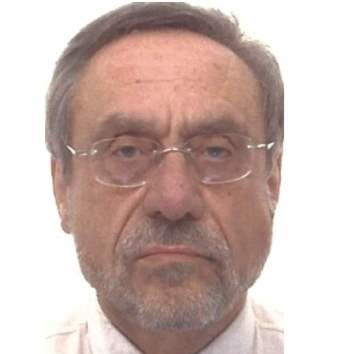Nanomaterial-Based Gas Sensors for Environmental, Agroalimentary, Safety and Industrial Applications
A special issue of Sensors (ISSN 1424-8220). This special issue belongs to the section "Chemical Sensors".
Deadline for manuscript submissions: closed (10 October 2023) | Viewed by 3335
Special Issue Editors
Interests: chemical sensors; nanomaterials; materials characterizations; nanowire; carbon nanofibers; electrochemical capacitors; screen printing; heterojunctions; RGTO; VLS
Special Issues, Collections and Topics in MDPI journals
2. Department of Life Science, University of Modena and Reggio Emilia, 41121 Modena, Italy
Interests: chemical sensor systems; food quality and safety; food traceability; food authenticity; machine learning; IoT; new sensing materials; VOCs; environmental quality; indoor and outdoor
Special Issues, Collections and Topics in MDPI journals
Special Issue Information
Dear Colleagues,
In recent years, gas sensors have been widely used in different fields, such as human health, environmental monitoring, automotive, and IoT in general.
The aim of this Special Issue is to highlight research with the potential to advance in new directions regarding new nanomaterials applied in gas sensor technology/devices.
In particular, we plan to focus our attention on gas sensor applications for environmental (indoor and outdoor), agroalimentary (from raw materials to processed), safety, and industrial applications.
We cordially invite you to submit original research systematically examining new sensing materials or preparation/integration methods.
Sensors can support, help, and increase the food sector’s abilities, as well as increasingly become more user-friendly and closer to real needs.
The covered topics will be extended to sensing devices, networks, and an array of gas sensors.
Potential gas sensor topics include, but are not limited to, the following:
- Quality of line/at line control from farm to fork;
- Shelf-life measurement;
- Risk assessment in indoor and outdoor situations;
- IoT—Internet of Things;
- Monitoring the presence of harmful chemical compounds (neoformation and the lack of);
- Quality of line/at line control from farm to fork;
- Shelf-life measurement;
- Risk assessment in indoor and outdoor situations;
- IoT—Internet of Things;
- Monitoring the presence of harmful chemical compounds (neoformation and the lack of);
- Online control in the process industry chain;
- Geographical and quality characterization in raw materials.
Prof. Dr. Giorgio Sberveglieri
Dr. Veronica Sberveglieri
Guest Editors
Manuscript Submission Information
Manuscripts should be submitted online at www.mdpi.com by registering and logging in to this website. Once you are registered, click here to go to the submission form. Manuscripts can be submitted until the deadline. All submissions that pass pre-check are peer-reviewed. Accepted papers will be published continuously in the journal (as soon as accepted) and will be listed together on the special issue website. Research articles, review articles as well as short communications are invited. For planned papers, a title and short abstract (about 100 words) can be sent to the Editorial Office for announcement on this website.
Submitted manuscripts should not have been published previously, nor be under consideration for publication elsewhere (except conference proceedings papers). All manuscripts are thoroughly refereed through a single-blind peer-review process. A guide for authors and other relevant information for submission of manuscripts is available on the Instructions for Authors page. Sensors is an international peer-reviewed open access semimonthly journal published by MDPI.
Please visit the Instructions for Authors page before submitting a manuscript. The Article Processing Charge (APC) for publication in this open access journal is 2600 CHF (Swiss Francs). Submitted papers should be well formatted and use good English. Authors may use MDPI's English editing service prior to publication or during author revisions.







